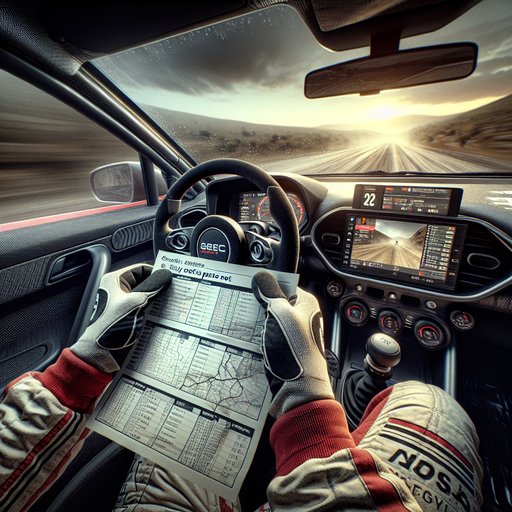
Rally co-drivers are equal partners to drivers, responsible for navigation, timing, safety, and information flow at racing speeds on changing terrain. Their work begins days before the start, shaping how fast a crew can safely travel and how precisely they operate within the rules. The partnership’s effectiveness often decides wins, titles, and the difference between risk and margin.
In modern stage rallying, the co-driver manages everything the driver cannot see or measure while driving flat-out. They construct and deliver pacenotes, interpret the roadbook, handle time controls, and ensure regulatory compliance on liaison sections. Their role spans reconnaissance, stage execution, and service liaison, forming a continuous loop of preparation, communication, and feedback that underpins the crew’s performance. Pacenotes are created during reconnaissance (typically a limited number of passes in WRC) and encode every crest, corner radius, camber, surface change, and hazard.
Systems vary—numeric scales (e.g., 1–6), descriptive terms, plus/minus modifiers, distances, and cautions—but consistency is paramount. Co-drivers edit, format, and index notes for rapid retrieval, then integrate late updates from route-note or ice-note crews on select asphalt events like Monte Carlo. On stage, co-drivers read ahead at a controlled cadence—usually one to three corners in advance—modulating timing to match speed, visibility, and grip. Calls include direction and severity, instructions like “tightens,” “opens,” “over,” “don’t cut,” distances, and warnings.
Clear diction through the intercom, stable breathing, and adaptable pacing help drivers commit without hesitation, even in dust, fog, night stages, or under tire degradation. Between stages, co-drivers manage the timecard and target times, guiding the crew through time controls, service in/out, refuel zones, and traffic-law-compliant liaisons. They prevent costly early/late penalties, monitor tire allocations and strategy with engineers, and reconcile any route amendments. Precise navigation using the roadbook and onboard tripmeters keeps the car on schedule when GPS aids are restricted or irrelevant to competition timing.
Safety responsibility is shared but often initiated by the co-driver. They follow SOS/OK procedures, deploy triangles, signal marshals, and use FIA tracking and flag protocols if incidents occur. They train for extrication, fire response, and medical communication. Physically, they manage reading at high g-loads and uneven surfaces; cognitively, they maintain error-free delivery for hours, mitigating motion sickness and vocal fatigue.
The partnership’s value is evident in long-running title-winning crews—Loeb/Elena, Ogier/Ingrassia, Mäkinen/Harjanne, Kankkunen/Piironen, Sainz/Moya—where shared terminology and trust produced consistency across rallies and eras. The FIA awards co-driver world titles alongside drivers (since 1979), recognizing that speed without accurate information is unusable. Co-drivers convert reconnaissance into repeatable pace, turning unknown roads into a plan—and a plan into results.












